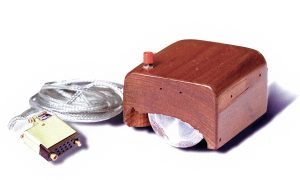
07-07-2022_
inmoveitwwwThe evolution of technology and the mouse.
Douglas Engelbart and Bill English built the first prototype, called the X-Y Position Indicator for a Display System, at the Stanford Research Center in 1963, of what we know today as the computer mouse. In 1968, the German company Telefunken created the first ball mouse, which could be displayed by X and Y coordinates simultaneously.
This mouse was called Rollkugel RKS 100-86. Bill English, working for Xerox, evolved and perfected the ball mechanism. He created the optical-mechanical mouse, which replaced the gears with perforated discs that allowed the passage or blocking of an infrared LED, a connection that the old device had. In 1981, Steve Jobs and his team visited the Xerox offices, showcased their Apple Lisa and it was then that two modifications were made to the mouse; they changed the rubber ball for a metal one and removed the buttons, leaving only one. Goodbye to the cable. In 1991 came the next step in the evolution of this peripheral.
In 1981, Steve Jobs and his team visited the Xerox offices, showcased their Apple Lisa and it was then that two modifications were made to the mouse; they changed the rubber ball for a metal one and removed the buttons, leaving only one. Goodbye to the cable. In 1991 came the next step in the evolution of this peripheral.
The Mouse Man worked by radio frequency, which meant that both the transmitter and the receiver did not have to be in direct vision, making it much more comfortable to use. The scroll wheel. The next innovation came a few years ago, in 1995, with the ProAgio from Mouse Systems. It was the first mouse in the world to incorporate the scroll wheel, which was a major breakthrough for web browsing or reading documents. The wheel, like today’s models, was also clickable, but Mouse System went one step further and added a side scroll button for the thumb, which could be configured via software.
It was time for the connector. In 1998, USB arrived for this type of peripheral. This made the mouse easier to use, as well as self-powered. The last big change. Although several prototypes already existed, it wasn’t until 1999 that Microsoft’s first optical mouse, the IntelliMouse IntelliEye, went on sale. With its precise technology, it did not need to be opened or disassembled for cleaning, as it was a closed mechanism.
The last big change. Although several prototypes already existed, it wasn’t until 1999 that Microsoft’s first optical mouse, the IntelliMouse IntelliEye, went on sale. With its precise technology, it did not need to be opened or disassembled for cleaning, as it was a closed mechanism.
It also solved a problem that previous mice had, which was that it did not need a specific surface to work. This led to the gradual disappearance of ball mice. The other variant of this change was laser technology, which works in a very similar way to optical sensors.
This technology has the particularity of being able to pass through the surface to provide a more detailed data supply. This type of sensor arrived in 2004. Today we have a wide range of options to choose from, depending on what we are going to use it for and what we need. Price, structure and ergonomics, variety of buttons… are some of the features we look for when buying a mouse.









